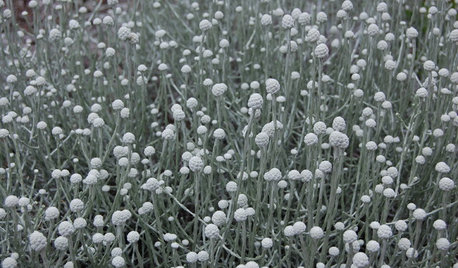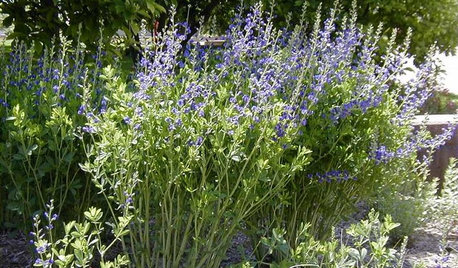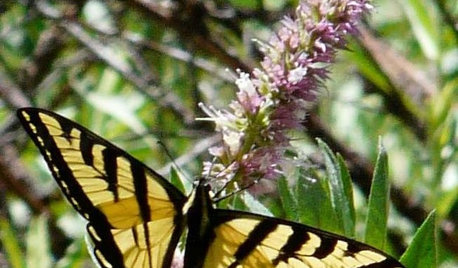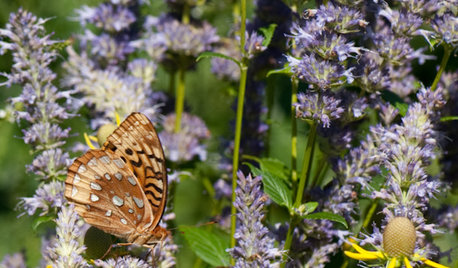Four-wing Salt Bush
lorna-organic
15 years ago
Related Stories

GARDENING GUIDES6 Plants That Beat Butterfly Bush for the Wildlife Draw
It's invasive, a nonnative and a poor insect magnet. Check out these better alternatives to butterfly bush in the garden
Full Story
BLUE AND GRAY FOLIAGEGreat Design Plant: Cushion Bush
Fuzzy and otherworldly, this white mounding shrub lights up gardens through all four seasons
Full Story
CONTAINER GARDENSPatio-Perfect Berry Bushes Like You’ve Never Seen
Small enough for pots but offering abundant fruit, these remarkable bred berries are a boon for gardeners short on space
Full Story
GARDENING GUIDES5 Great Plants for Borders and Screens
Get the effects of a shrub but in less time — and drawing more winged pollinators — with these herbaceous perennials
Full Story
GARDENING FOR BUTTERFLIESButterfly Gardening: Delight the Eyes With Living Sculptures
Surprise and thrill with a garden that attracts magical winged creatures, bringing color, movement and life
Full Story
GARDENING GUIDES6 Steps to Creating Your Butterfly Garden
Encourage these fanciful winged beauties to visit your garden while helping restore their fragmented habitat
Full Story
GARDENING AND LANDSCAPING9 Flowers That Draw Butterflies
Charm winged beauties and human visitors alike with these enticing, fragrant and colorful blooms for the garden
Full Story
GARDENING GUIDESGreat Design Plant: Anise Hyssop Delights Licorice Lovers
With its distinct scent and flower spikes, drought-tolerant Agastache foeniculum stirs interest among humans and winged creatures alike
Full Story
HOUZZ TOURSMy Houzz: Caribbean Beachside Style in Australia
Ditching a dated color scheme, an old deck and more, a couple renovates a four-bedroom home as an investment and vacation property
Full Story
GARDENING GUIDES8 Native Shrubs for Year-Round Bird Feeding
It’s not just about berries. These plants provide insects for birds and seasonal interest for gardeners
Full StorySponsored






petzold6596
lorna-organicOriginal Author
Related Professionals
Foothill Ranch Landscape Architects & Landscape Designers · Richmond Heights Landscape Architects & Landscape Designers · Roxbury Crossing Landscape Architects & Landscape Designers · Bowie Landscape Contractors · Cockeysville Landscape Contractors · El Sobrante Landscape Contractors · Firestone Landscape Contractors · Fort Mill Landscape Contractors · Mount Sinai Landscape Contractors · Salem Landscape Contractors · Sugar Hill Landscape Contractors · Thornton Landscape Contractors · Wallingford Landscape Contractors · Winter Gardens Landscape Contractors · Raytown Landscape Contractorsmagdaloonie
desertlvr
lorna-organicOriginal Author
desertlvr